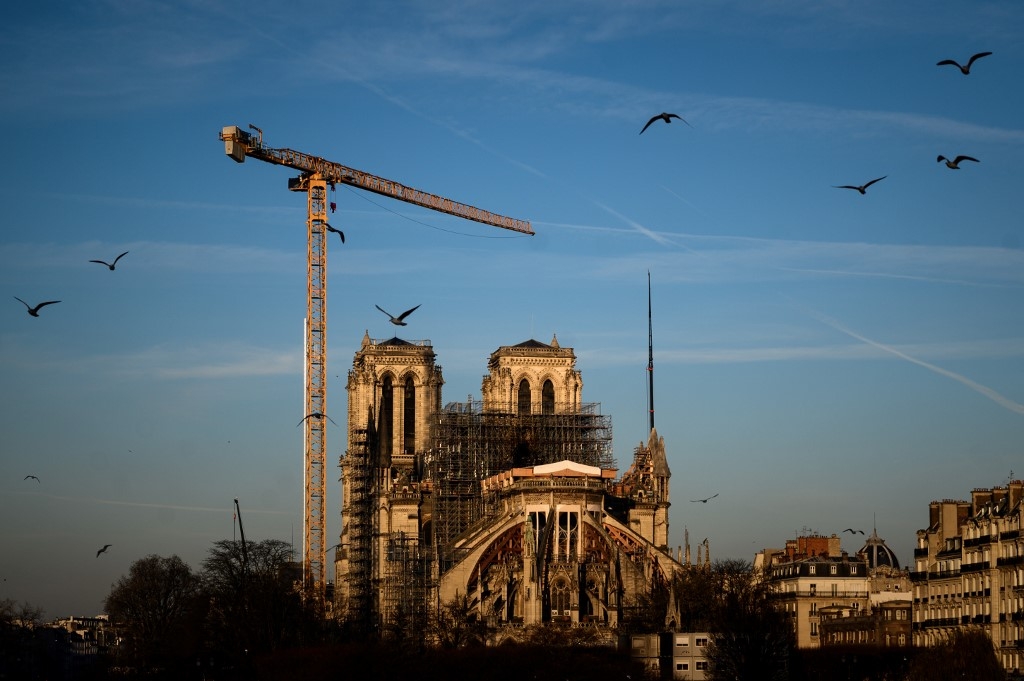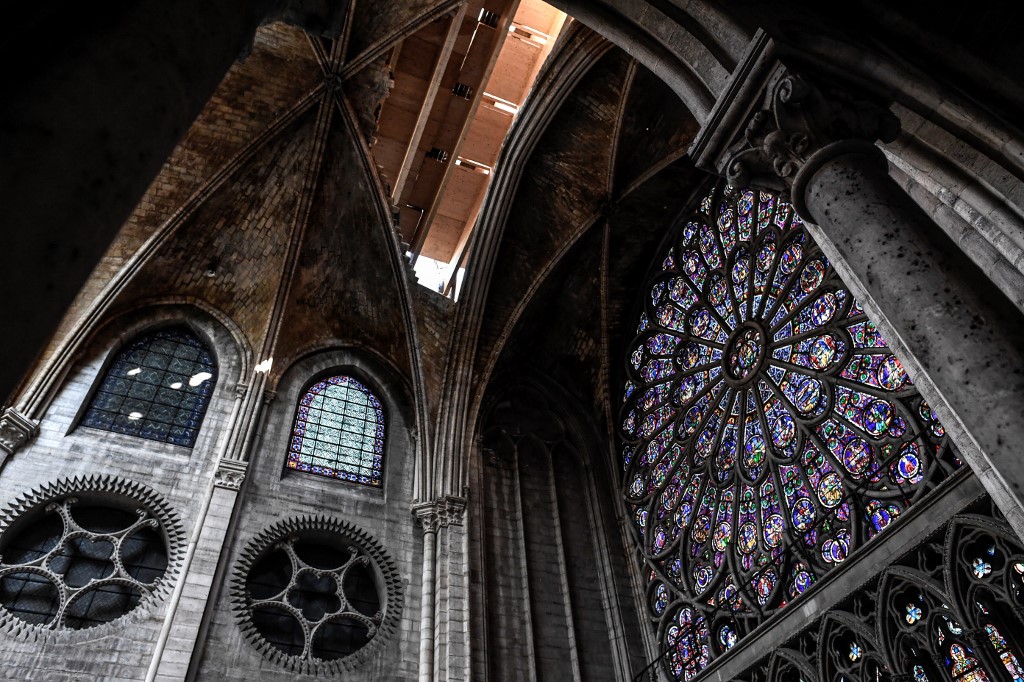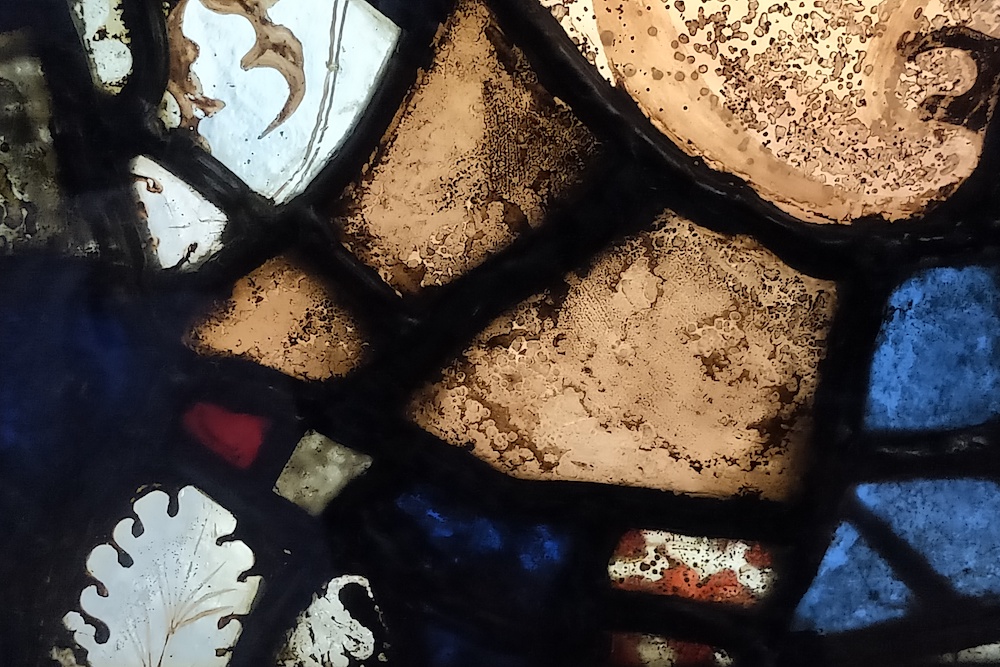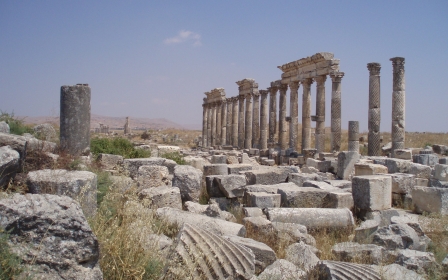Notre-Dame: Secret Syrian origins of France's medieval art

Who would have thought that last year’s catastrophic fire at Notre-Dame would reveal so many secrets from its ashes?
A team of scientists has been gathered to conduct deep background research into the fabric of the cathedral, hoping to understand how the medieval masons and craftsmen made the building stand up. Nothing was written down; no plans were used. The study will take an estimated six years, helping to guide the restoration work.
The fire also sparked my own desire to study the topic further. This time last year, I wrote about the architectural backstory of the cathedral: like all medieval Gothic cathedrals, the origins of its twin towers flanking a monumental west entrance, its pointed arches, its rose windows and its ribbed vaulting, can all be traced to the Middle East.
Now, after extensive research, I have discovered many more connections, all unexpected. I have included them in my book "Stealing from the Saracens".
Stained-glass windows
New MEE newsletter: Jerusalem Dispatch
Sign up to get the latest insights and analysis on Israel-Palestine, alongside Turkey Unpacked and other MEE newsletters
Let’s start with the stained glass, thankfully still intact after the fire. Recent analyses of stained glass in the main cathedrals of England and France between 1200 and 1400 all show the same high plant ash composition, typical of Syrian raw materials.
High-grade Syrian plant soda ash, known as “the cinders of Syria”, was considered superior to the pre-Islamic Egyptian natron ash used by the Romans and the Byzantines in their glass manufacturing; and all Venetian glass analysed from the 11th to the 16th centuries shows its consistent use.
Medieval continental Europe imported the raw materials for all its glass, as there was no known local source.
Coloured glass windows have been an integral and innovative element of Islamic architecture since the 7th century, starting with Jerusalem’s Dome of the Rock, which had coloured glass in its many high windows.
They were known as shamsiyyat (from Arabic for sun) and qamariyyat (from Arabic for moon), showing how the solar and lunar imagery of windows continued into European religious architecture.
The Knights Templar adopted the Dome of the Rock as their chief Christian shrine after the First Crusade, mistaking it for the Temple of Solomon, an error that resulted in many churches being modelled on a Muslim shrine.
Notre-Dame’s famous rose windows on its west and north facades date from 1225-50, and are designed for the light to radiate out from the centre, hence the so-called Rayonnant style.
Light was also at the core of Gothic cathedral design. Saint-Denis in northern Paris was where the wealthy and powerful Abbot Suger first used Illuminationist thinking as the guiding principle in his new basilica. But who was Denis?
The fleur-de-lis
The abbot and his contemporaries believed him to be a disciple of Paul, who later became confused with the first Bishop of Paris and patron saint of France, martyred on Montmartre.
Centuries later, scholars realised that Denis’s influential work, The Celestial Hierarchy, was in fact a hoax, written by a 5th-century Syrian mystic monk calling himself Denis in order to get his philosophy noticed.
As a result, he is known in ecclesiastical circles as Pseudo-Denis, but his trick worked. Today, the Basilica of Saint-Denis is universally acknowledged as the first true example of “Gothic”, with tall, pointed arches enabling the lofty elegant choir. It was used thenceforth as the burial place of French kings.
The very symbol of French nationhood and French royalty is the fleur-de-lis. But where was that first seen as an emblem? On the plains of Syria, the Crusaders copied the local sport of jerid, knightly jousting tournaments on horseback where the players attempted to dismount each other with a blunt javelin.
Heraldry and the use of family or dynastic symbols was already in use under the Ayyubids, and the fleur-de-lis first appeared in its true heraldic form, the three separate leaves tied together in the middle by a band, as the blazon of Nur al-Din ibn Zanki in the 12th century, and on two of his monuments in Damascus.
Later, Mamluk helmets often had nasal guards terminating in a fleur-de-lis. The boy king of England, Henry VI, was crowned king of France at the age of 10 inside Notre-Dame in 1431, against a backdrop of fleur-de-lis.
An unlikely discovery
Notre-Dame’s central portal carries a stone-carved allegory of alchemy, a statue of a woman holding books with a ladder and staff. The very word alchemy comes from the Arabic al-kimya, and in medieval times, the Middle East was widely acknowledged as the home of advanced experimental science.
The use of plant ash in glass was itself a kind of alchemy, an experiment in which the addition of the alkaline plant called ushnaan to the silica of the crushed pebbles of the Euphrates produced the world’s finest and most delicate glass, based at Raqqa, the centre of the Syrian glass industry from the 9th to the 14th century.
The addition of further chemicals coloured the glass - cobalt for blue, copper oxide for turquoise, and so on.
But the ashes of ushnaan also had other properties. They had been used since biblical times as a cleaning agent where there was no access to water, both in personal hygiene and for laundry.
To this day, it remains an essential natural ingredient in the Syrian soap industry, as the plant grows especially well south of Aleppo around the salt lake of Jaboul. This is what gives Aleppo soap such a wonderfully soft and silky feel on the skin; it even has the bubbles trapped inside, just like Syrian glass. These bubbles also give the glass extra strength, making it less brittle, less liable to fracture, which could help explain the miracle of why the glass survived the fire.
The scientists at Notre-Dame have made their own unlikely cleaning discovery: that the best way to remove the toxic yellow lead dust from the stained-glass windows, without endangering the colours, is to use baby wipes from Monoprix. Commercial chemical wipes risked being too abrasive; gentle Aleppo soap would no doubt be even better.
How fitting it would be if the cathedral could be cleaned using the very same plant ash that is already inside its stained-glass windows.
The views expressed in this article belong to the author and do not necessarily reflect the editorial policy of Middle East Eye.
This article is available in French on Middle East Eye French edition.
Middle East Eye delivers independent and unrivalled coverage and analysis of the Middle East, North Africa and beyond. To learn more about republishing this content and the associated fees, please fill out this form. More about MEE can be found here.








